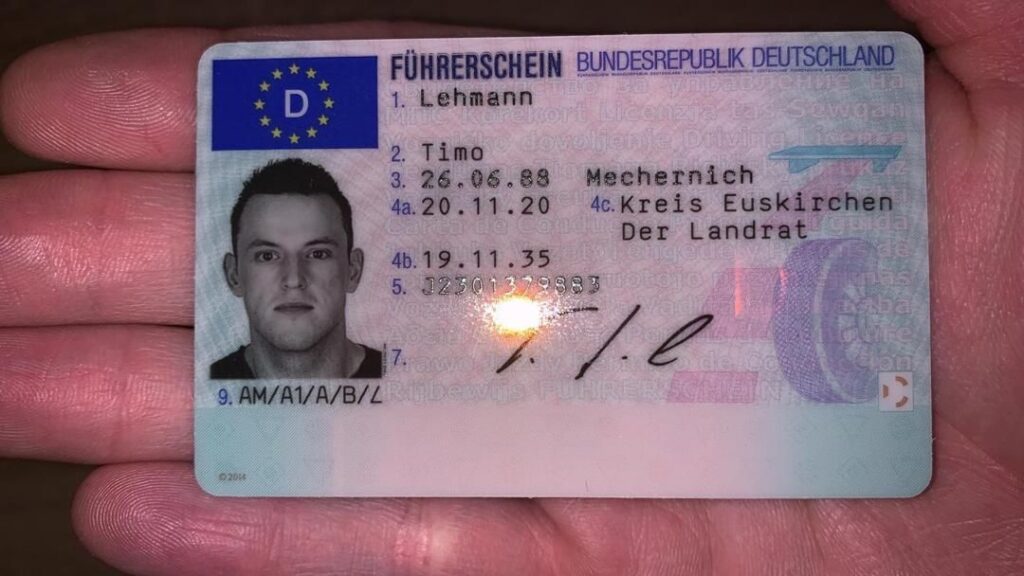How to Legally Buy a Driver's License: A Comprehensive Guide
Obtaining a motorist's license is a substantial turning point for many individuals, representing independence and the ability to take a trip freely. Nevertheless, Registrierten Führerschein Legal Online Kaufen and regulations surrounding acquiring a driver's license can be complicated, leading some individuals to seek shortcuts. It is important to highlight that buying a chauffeur's license legally isn't about bypassing regulations; rather, it's about understanding the genuine processes for acquiring a motorist's license in your jurisdiction. This short article intends to inform readers about the proper treatments and guidelines for acquiring a motorist's license legally.
Comprehending the Legal Process of Obtaining a Driver's License
Before delving into the requisite steps for obtaining a motorist's license, it's important to understand the legal framework that governs these procedures. Each state or country has its own Department of Motor Vehicles (DMV) or equivalent authority, which controls the issuance of motorist's licenses. Here's a breakdown of the common steps included in getting a driver's license legally:
| Step | Description |
|---|---|
| 1 | Eligibility Check: Verify age, residency, and other requirements. |
| 2 | Student's Permit (if required): Some areas require acquiring a learner's authorization before applying for a full license. |
| 3 | Chauffeur's Education: Complete any needed driver's education courses. |
| 4 | Practice Driving: Accumulate the needed number of practice hours. |
| 5 | Composed Test: Pass a composed test covering traffic laws and guidelines. |
| 6 | Road Test: Successfully finish a driving test with an inspector. |
| 7 | Application Submission: Submit the application together with necessary files and costs. |
| 8 | Getting the License: After passing all tests and conference requirements, receive the chauffeur's license. |
Step-by-Step Breakdown of Each Phase
1. Eligibility Check
The very first step towards getting a motorist's license is to validate that you satisfy the eligibility requirements. Normally, this includes being of a certain age (often in between 16 to 18 years), being a local of the state in which you are using, and having valid recognition.
2. Learner's Permit
In numerous places, you need to initially get a learner's authorization, which allows you to practice driving under specific constraints. This authorization often needs passing a preliminary written test and is normally offered to more youthful candidates.
3. Chauffeur's Education
A number of states mandate completion of a chauffeur's education course that consists of both class direction and behind-the-wheel training. This education assists new chauffeurs understand safe driving practices and state-specific traffic laws.
4. Practice Driving
Most jurisdictions require a set number of hours driving under supervision before you can take the roadway test. Examine your state's guidelines to discover the number of hours are needed and what external conditions are needed (e.g., night driving).
5. Composed Test
Before taking the roadway test, applicants must typically finish a composed examination. Führerschein Kaufen Seriös of roadway signs, traffic laws, and safe driving techniques.
6. Road Test
The road test examines your practical driving abilities. An inspector will evaluate your ability to manage a car while following traffic laws during a set driving route.
7. Application Submission
After passing the tests, you will require to send an official application for your driver's license. This can typically be performed in person at your local DMV office or sometimes online. Guarantee you have the required files, such as identity confirmation and proof of residency, and be prepared to pay the license fee.
8. Getting the License
Once all requirements are satisfied, you will get your motorist's license. Keep in mind that in some jurisdictions, a provisionary license might be issued initially, followed by a full license after preserving a clean driving record for a given period.
Frequently Asked Questions (FAQs)
1. Can I utilize a foreign motorist's license in the United States?
Yes, numerous states enable tourists to drive with a valid foreign driver's license for a set duration. However, it's vital to check particular state guidelines, as the guidelines differ.
2. What is the minimum age to get a chauffeur's license in the United States?
This differs by state, however the minimum age is usually in between 16 and 18 years. It is advisable to contact your state's DMV.
3. For how long does it take to get a driver's license after passing tests?
When all requirements are met, lots of states issue the license on the exact same day, generally in the form of a short-term license till the main card gets here by mail.
4. What files do I require to look for a chauffeur's license?
Files typically include evidence of identity (passport, birth certificate), evidence of residency (utility expense, lease), Social Security number, and sometimes, school attendance records for minors.
5. Can I get a chauffeur's license if I have a rap sheet?
Having a criminal record might affect your ability to acquire a driver's license, especially if the offense connects to vehicle operation. Laws differ by state, so it's essential to examine particular requirements.
Acquiring a motorist's license legally requires a clear understanding of the particular processes, requirements, and policies in your location. While it might appear cumbersome, following the correct steps makes sure security, compliance with the law, and a valid license that supports the flexibility to drive legally. By focusing on education, practice, and adherence to legal standards, potential chauffeurs can confidently navigate the journey to becoming licensed drivers.

